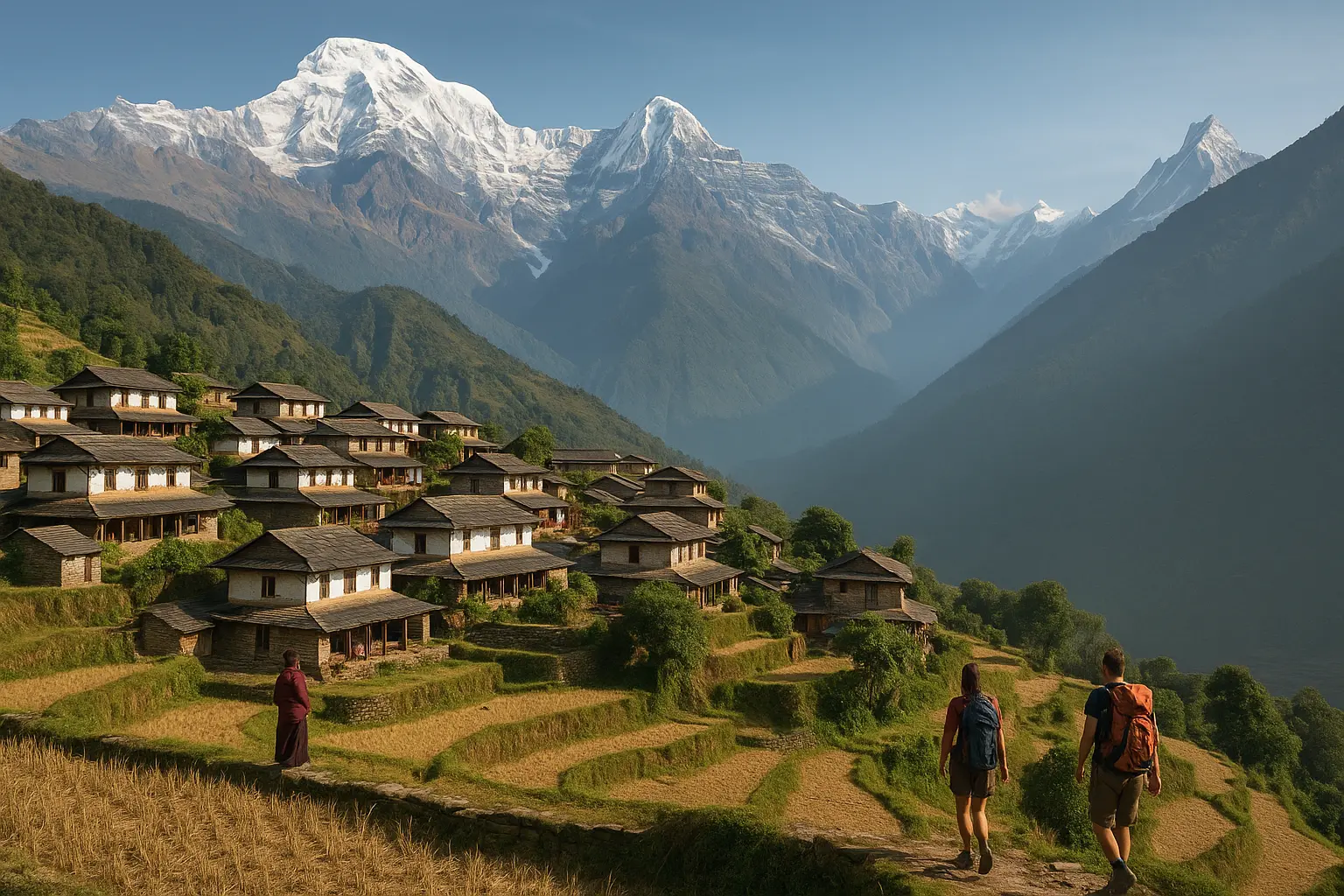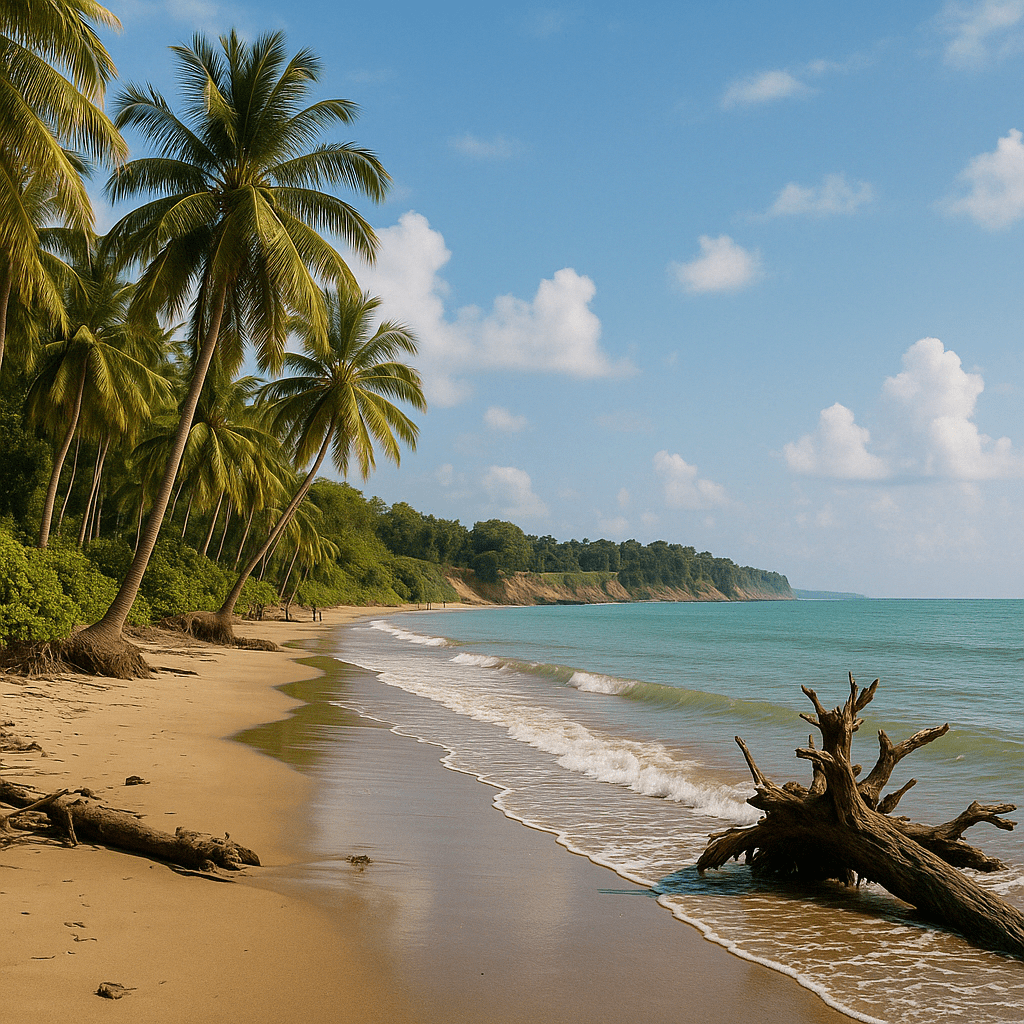
The Himalayas of Nepal, a staggeringly beautiful canvas of towering peaks and verdant valleys, have forever been a siren's call to trekkers and cultural enthusiasts alike. Yet, while the well-trodden paths to Everest Base Camp and the Annapurna Circuit see a continuous stream of footsteps, numerous quaint villages throughout this mighty range remain under the radar. For those yearning to peel back the layers of Nepal's less commercialized facets, these hidden villages offer a glimpse into the authentic pastoral life, local traditions, and breathtaking landscapes that are yet to be swarmed by backpackers. Here lies our guide to seven Himalayan gems that promise rich experiences and pristine beauty.
1. Barpak: The Untouched Hero Village
Perched at an altitude that challenges the clouds, Barpak in the Gorkha district is predominantly known for its resilient warriors, the Gurkhas. Heavily affected by the 2015 earthquake, this village has risen remarkably from its ruins, maintaining its traditional slate-roofed homes and welcoming nature. Known as the 'village of heroes', Barpak offers commanding views of Buddha Himal and Ganesh Himal. Trekking the meandering paths, you can experience the overwhelming warmth of the Gurkha community and their rich cultural tapestry. While there, don’t miss the local museum which encapsulates the Gurkha history with great reverence.
2. Tsum Valley: The Hidden Beyul
Once a restricted area, Tsum Valley is considered a 'Beyul,' or hidden valley, believed by Buddhists to be a refuge created by Guru Padmasambhava. This area remains relatively untouched by western influences and retains a profound sense of spirituality and peace. Trekking through the valley reveals rugged landscapes, ancient gompas (monasteries), and a chance to observe endangered wildlife, including the Himalayan Tahr and Blue Sheep. The valley also partakes in unique customs – one being the local practice of polyandry. A visit to Mu Gompa, the largest monastery in the valley, offers not only spiritual enrichment but also panoramic Himalayan vistas.
3. Phortse: The Naturalists’ Haven
For wildlife enthusiasts and those interested in eco-tourism, Phortse is a dream. Situated off the main trails to Everest, this village sees fewer tourists and offers encounters with rare Himalayan species in their natural habitat. Phortse is part of the Khumbu region and stands out for its community-based tourism initiatives focusing on conservation. The village is uniquely positioned for trekking enthusiasts to explore less crowded paths and engage with initiatives like the Phortse Conservation Program, which aims to preserve local wildlife and promote sustainable tourism.
4. Ghalegaun: The Model Village
Famed as a model village for community-based rural tourism in Nepal, Ghalegaun is an exemplar of hospitality and sustainable village life. Nestled in the foothills of the Lamjung Himal, visitors here are treated to traditional Gurung hospitality, cultural shows, and organic local cuisine that underscore a community deeply proud of its heritage. The village offers splendid sunrise and sunset views over the Annapurna and Manaslu ranges, making it a picturesque spot for photographers and nature lovers.
5. Upper Mustang: The Last Forbidden Kingdom
Unlike other rural landscapes of Nepal, Upper Mustang offers a stark beauty with its wind-swept vistas and ochre valleys which once formed part of the Tibetan empire. This restricted region has only been open to tourists since the 1990s, ensuring that its medieval temples, royal palace, and mysterious caves are well-preserved. The walled city of Lo Manthang, in particular, is a treasure trove of ancient Tibetan Buddhist culture.
6. Nar Phu Valley: The Remote Ancestral World
For those adventurous at heart, Nar Phu Valley presents a riveting challenge. Accessible only via a special permit, this rugged trail offers an intimate encounter with Nepal’s raw beauty. Ancient villages of Nar and Phu showcase medieval Tibetan culture, virtually untouched by modernity. Here, donkeys carry goods along narrow paths, and monks live out centuries-old practices in remote monasteries perched against jagged peaks.
7. Sikles: The Eco Village
Sikles, proudly positioned as an eco-tourism model village, is largely uncharted by the commercial trekking industry. This village offers a distinct look at the conservation of biodiversity and sustainable tourism practices in remote Nepal. Lush terrains offer ample opportunities for bird watching, especially the indigenous pheasants. Moreover, the village’s commitment to maintaining ecological balance makes it an ideal spot for environmentalists and nature enthusiasts.
As you lace up your boots and set out to explore these hidden enclaves of the Himalayas, remember, the essence of travel lies not only in seeing new vistas but also in immersing oneself into the lifestyles and traditions that define these landscapes. These villages offer a rich tapestry of culture, adventure, and serenity, perfect for those looking to walk the path less traveled. Clear skies and warm welcomes await in each of these unique corners of Nepal, offering moments of discovery that are bound to resonate long after your journey has concluded.


